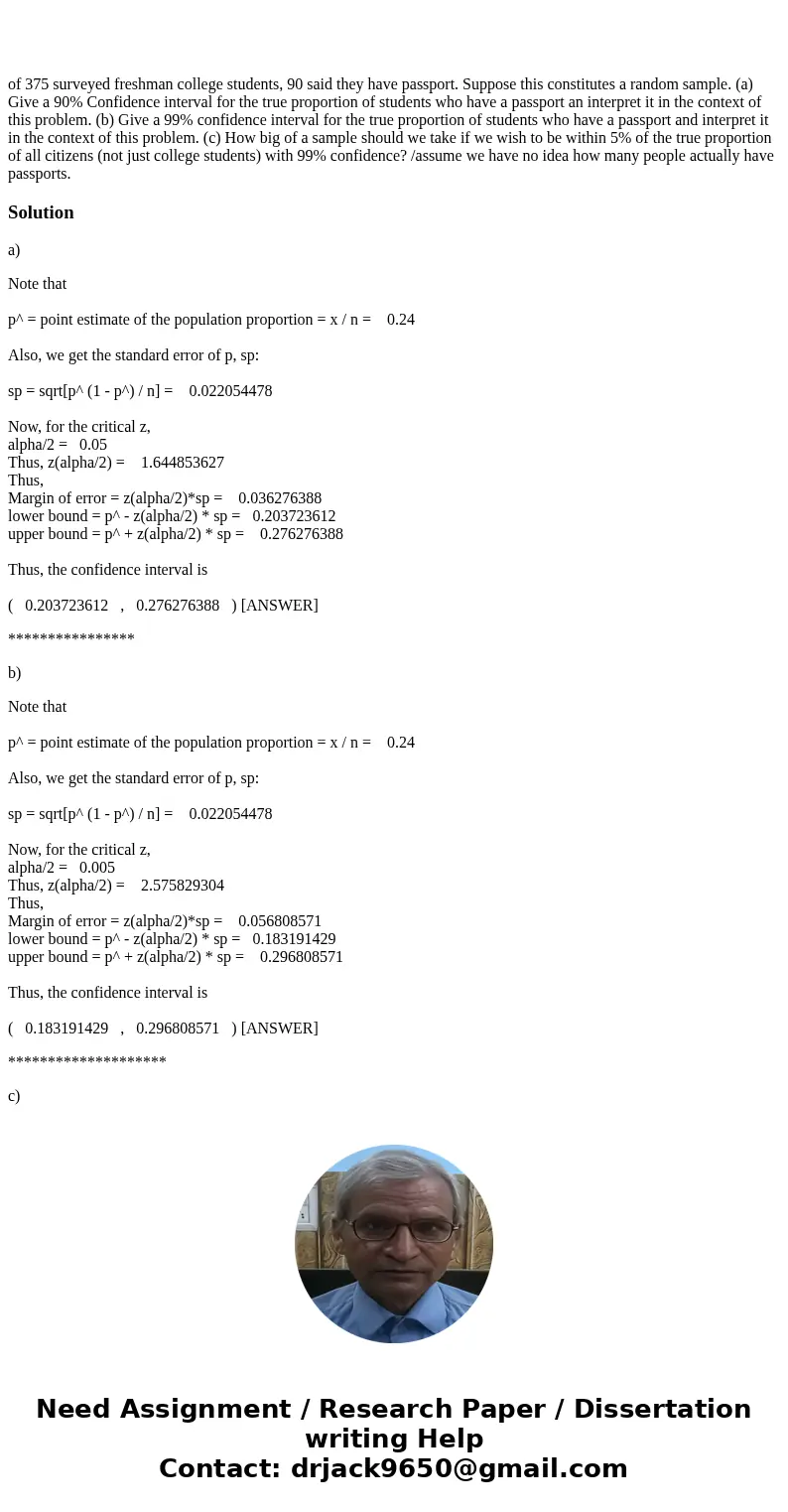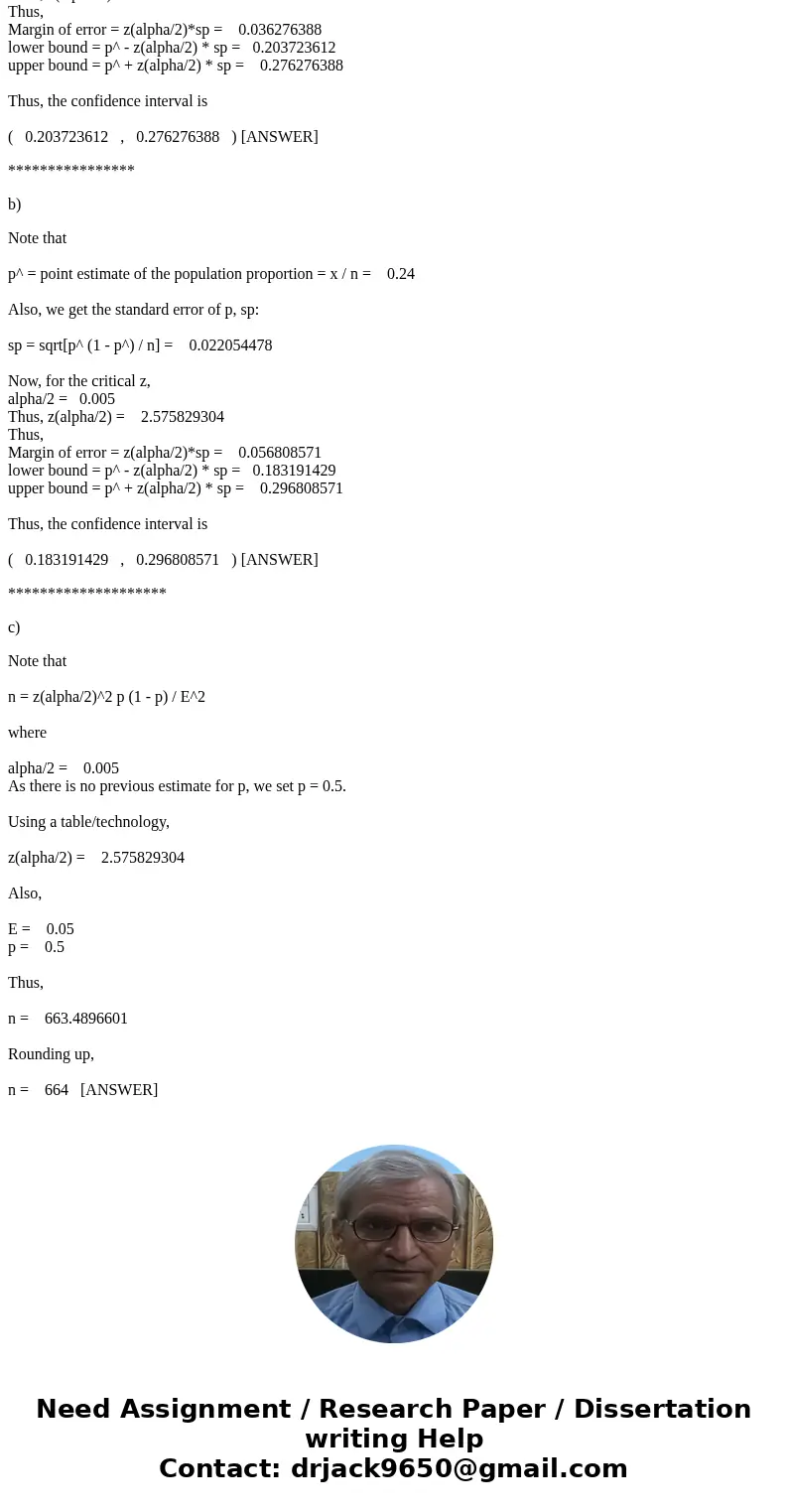of 375 surveyed freshman college students 90 said they have
Solution
a)
Note that
p^ = point estimate of the population proportion = x / n = 0.24
Also, we get the standard error of p, sp:
sp = sqrt[p^ (1 - p^) / n] = 0.022054478
Now, for the critical z,
alpha/2 = 0.05
Thus, z(alpha/2) = 1.644853627
Thus,
Margin of error = z(alpha/2)*sp = 0.036276388
lower bound = p^ - z(alpha/2) * sp = 0.203723612
upper bound = p^ + z(alpha/2) * sp = 0.276276388
Thus, the confidence interval is
( 0.203723612 , 0.276276388 ) [ANSWER]
****************
b)
Note that
p^ = point estimate of the population proportion = x / n = 0.24
Also, we get the standard error of p, sp:
sp = sqrt[p^ (1 - p^) / n] = 0.022054478
Now, for the critical z,
alpha/2 = 0.005
Thus, z(alpha/2) = 2.575829304
Thus,
Margin of error = z(alpha/2)*sp = 0.056808571
lower bound = p^ - z(alpha/2) * sp = 0.183191429
upper bound = p^ + z(alpha/2) * sp = 0.296808571
Thus, the confidence interval is
( 0.183191429 , 0.296808571 ) [ANSWER]
********************
c)
Note that
n = z(alpha/2)^2 p (1 - p) / E^2
where
alpha/2 = 0.005
As there is no previous estimate for p, we set p = 0.5.
Using a table/technology,
z(alpha/2) = 2.575829304
Also,
E = 0.05
p = 0.5
Thus,
n = 663.4896601
Rounding up,
n = 664 [ANSWER]


 Homework Sourse
Homework Sourse